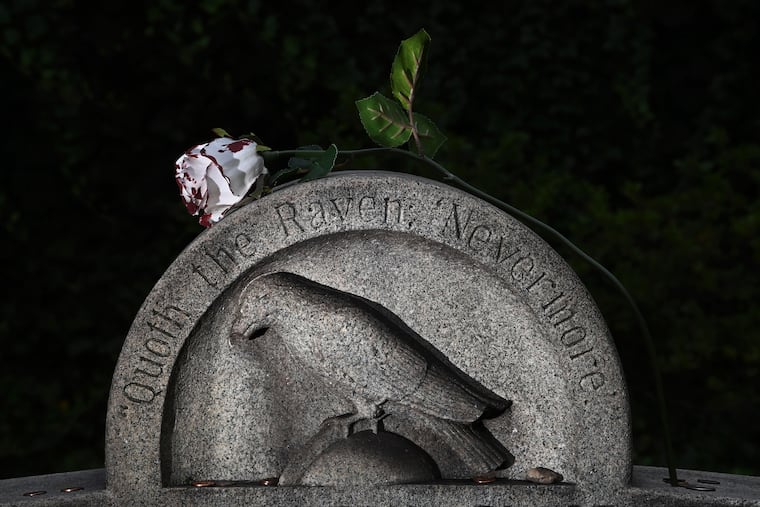This week in Philly history: Edgar Allan Poe dies under mysterious circumstances
On Oct 7, 1849, American poet Edgar Allan Poe died in a Baltimore hospital. He had significant ties to Philadelphia.

Edgar Allan Poe boarded a steamer ship on Sept. 27, 1849, in Richmond, Va., headed toward Baltimore. He planned to catch a connecting ride to Philadelphia, where he was contracted to edit a collection of poems.
But Poe never made it to Philadelphia. He vanished into the autumn wind.
And his death soon followed.
Success and struggle
In popular culture, Poe is routinely depicted in contradictions: Angel of death and literary genius. A man who struggled with depression and binge drinking, and a literary critic who was widely read and respected. An American original whose work is internationally lauded and celebrated, and a writer whose literary concepts and real-life struggles have been appropriated into caricatures of mental health, T-shirt fodder, and Halloween costumes.
He’s claimed by many as their own. He was born in Boston, but raised in Richmond, Va. In Baltimore, at age 27, he met his 13-year-old cousin, Virginia, whom he married in 1836 and loved until her death in 1847.
And in Philadelphia, where he lived from 1838 to 1844, he absorbed the horrors of the human condition in a city bathed in poverty and corruption, consumed with crime and chaos, and overrun with race riots and labor conflicts. It’s where he concocted detective stories and conjured genre-setting entries in horror and science fiction, writing such classics as The Fall of the House of Usher, The Tell-Tale Heart, and The Masque of the Red Death.
But he wrote The Raven, his most seminal work, in New York City, the site of his last known residence.
A final mystery
On election day, Oct. 3, 1849, he was found near an East Baltimore tavern that moonlighted as a polling place. He appeared shoddily dressed and disheveled, seemingly drunk and delirious.
Four days later, alternating between fits of delirium and lucidity, the 40-year-old poet died in a Baltimore hospital.
And Baltimore, to this day, has not loosened its grip on his remains. His grave site is a tourist attraction, its NFL team was named after his famous poem, and his image is a keystone of its marketing portfolio. But he’s also claimed in New York and Philadelphia, which have converted homes he once occupied into museums.
His cause of death was never identified, explained, or determined.
In death, as in life, his macabre withstood.